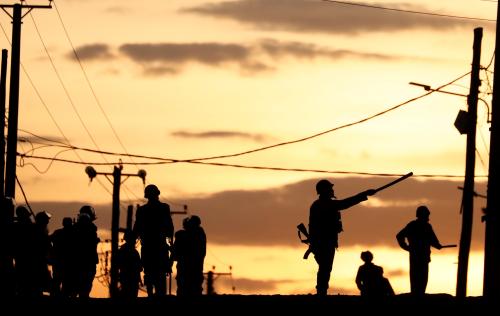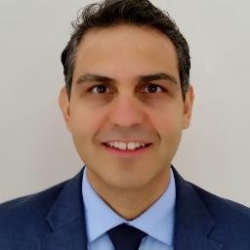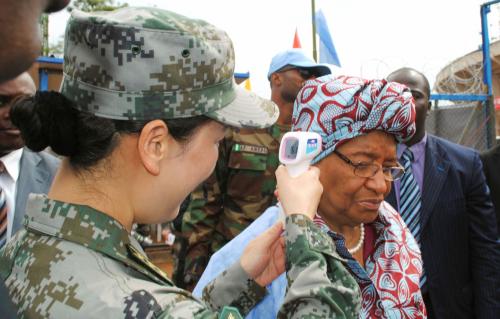In anticipation of a foreign policy and development issue that the new 116th Congress will need to address—state fragility—the Brookings Institution recently convened a roundtable of experts from multilateral institutions, the U.S. government, think tanks, NGOs, foundations, and universities to identify leading practices and approaches for helping fragile states to exit fragility. This post includes the key takeaways.
The question of “what works” to help fragile countries out of decades of conflict, strife, and disaster has proven elusive. Despite global progress in poverty reduction, health, education, and the economy, fragile states are poised to be left behind by the Sustainable Development Goals (SDGs) in the same way they were left behind by the Millennium Development Goals (MDGs). Conflict is increasingly concentrated in these contexts, which also have the highest vulnerability to disasters, pandemic and global price shocks. By 2030, the endpoint of the SDGs, an estimated 80 percent of the world’s extreme poor will live in these volatile countries. The U.N. Secretary-General has warned that climate change and environmental degradation are key risk multipliers for fragile states and vulnerable regions. The search for new solutions and approaches in the face of fragility has never been so urgent.
Pathways Out of Fragility
The World Development Report on Governance and the Law (WDR) provides a reality check that today’s most peaceful and advanced economies, including Europe, were once inundated by war and violent contests of power. It notes these countries were in fact “fragile states for most of their historical trajectory.” The path out of fragility is long, winding, and not preordained.
The WDR notes that the world’s most advanced economies are more the product of avoiding or managing major crisis and conflict than of achieving periods of accelerated growth. Over long stretches of trial and error, they were able to establish resilient political settlements and institutions and the social norms and national identities for cooperation and constraint. The fundamental question is whether development partners can help fragile states to leapfrog decades of crisis, war, and destitution on a path to peaceful, just, and inclusive institutions and resilient political orders.
In between paradigms
The current aid paradigm to support fragile states focuses on promoting economic growth and eradicating poverty, not managing major crises. It attempts to transplant Western institutions and best practices in a bid to make Somalia into Denmark. It works through short-term, one-off projects, scattered technical assistance, and uncoordinated efforts between countries and partners. This paradigm is increasingly viewed as obsolete, but a new paradigm has yet to fully emerge.
The Emerging Paradigm
The emerging paradigm for exiting fragility builds on “what works” while also recognizing what does not work.
1. Resilience
Notable success has been achieved in avoiding or managing major crisis through the practice of resilience in major sectors like food security, climate adaption, and disaster risk reduction (DRR). These efforts, however, have not been designed to promote country-wide resilience in the face of complex risks, which is precisely what is needed to exit fragility. Alarmingly, the majority of DRR assistance bypasses fragile states altogether despite their acute vulnerability. More holistic approaches are beginning to emerge. The OECD, EU, U.N., African Development Bank, and World Bank and g7+ are developing new assessment tools and strategies to support country-wide shifts from fragility to resilience. The OECD has even redefined fragility in more structural resilience terms, as the “combination of exposure to risks and insufficient coping capacities at the state, system, or community level for managing these risks.”
Stabilization and prevention approaches have begun to adopt a resilience lens to better understand how risks of disaster, destitution, and conflict interact and mutually reinforce one another and how to leverage resilient capacities for fragile political settlements. As the Pathways for Peace report observes, “resilience through sustainable development…is the best means of prevention.”
Widening evidence shows that “social capital” is the core driver in building resilience to conflict and disaster through mutually-reinforcing functions of “bonding” within communities, “bridging” across communities, and “linking” between communities and formal institutions for access to information, resources, and responsive action. When incorporated as an organizing principle into large-scale development programs, like the Afghanistan Basic Package on Health Services or Ethiopia’s productive safety net, social capital can strengthen the norms and networks between fragmented communities and institutions to better mitigate risks and cope with crisis. When focused on greater empowerment and inclusion of women, social capital can increase their entry into wider markets and support peace efforts through bridging efforts across divided communities and links to formal institutions. Countries where women made up 10 percent of the workforce compared to 40 percent were 30 times more likely to experience internal conflict. Renewed calls for investing in human capital and infrastructure in fragile states are necessary but not sufficient to cultivate underlying societal norms and networks for trust and cooperation, which are the largest deficits in fragile states.
2. Adaptive development
The standard development approach of using linear and inflexible program models to transplant external “best practices” into foreign political economies and social systems is slowly giving way to adaptive approaches. Adaptive approaches are focused on achieving outcomes through iteration and continuous learning of what works for given contexts, not programming through pre-fixed solutions and end of program evaluations.
While adaptive methods are still in their infancy, key initiatives with a widening evidence base of success are leading the way, including PDIA, strategy testing, and the “science of delivery.” The persistence of the standard “best practices” and quick win projects approach is partly rooted in legislatures that demand visibility and accountability for overseas aid programs. The U.S. Millennium Challenge Corporation (MCC) is an important exception in that Congress does not impose earmarks on it. Instead, MCC has the flexibility to work with country partners to diagnose specific governance and poverty problems and co-create solutions with governments through “compacts” that align with national priorities.
New donor consortia for adaptive learning show further promise in shifting development paradigms to more effectively work in complex and fast-changing fragile contexts. These efforts must be widened to serve more development agencies and the institutions and practices of governments and local organizations who are the ultimate shareholders and stewards of change.
3. Addressing political problems
Many development partners assume technical solutions are the fix without factoring in the political dynamics. The WDR helpfully introduces a framework for governance reform that calls for the diagnosis of political power. From there, it identifies drivers for change to increase policy effectiveness through enhanced cooperation, commitment, and coordination—critical functions of governance institutions.
Importantly, the WDR calls for an adaptive approach to diagnose power imbalances and refine what works to address these imbalances. Because no foreign institution can simply be introduced into a fragile state and expected to perform the same function, exits from fragility will require using available means to manage complex risks. This likely includes managing political and security risks through existing patronage networks to reward allies or co-opt opponents in the absence of WDR prescribed cooperation, coordination, and commitment mechanisms. At the heart of political resilience is finding ways to gradually strengthen these mechanisms for cooperation and commitment to allow new economic and political challengers to enter the policy arena and vie for power without triggering the collapse of the system. The accommodation of economic challengers can lead to new market efficiencies and a potentially widened tax base.
4. Collective action
If development partners are going to help fragile states exit fragility, they must work within a more effective ecosystem for collective action that replaces the current paradigm of short-term, uncoordinated, and one-off projects and stovepiped technical assistance. There must be a unifying framework for resilience that can identify the topline risks in a fragile state and introduce strategies, principles, and adaptive methods for mobilizing development capacities to address these risks. This is a primary difference between working in fragile and non-fragile settings. In the former, development assistance must be doubly purposed to both strengthen human capital, infrastructure, service delivery, state core functions, and the economy, while also anticipating and mobilizing against major risks and their root.
This will require a greater cooperative environment anchored in common coordination mechanisms between government and development partners. These cannot be top-down bodies for directing assistance at state and local levels. Neither can they be bureaucratic rubber-stamping bodies for approving a raft of local projects. In the language of the WDR, these mechanisms must play critical roles to support and guarantee coordination, commitment, and cooperation arrangements for governments trying to overcome entrenched clientist or captured state structures. Liberia’s GEMAP and Guatemala’s CICIG are key examples of partners helping to solve commitment and coordination breakdowns at major impasses. Although many in government resisted the GEMAP, there were also champions. Progress out of fragility cannot ascribe governments or leaders with purely good or bad motives, but must realize that development is an elite bargaining process in poorly regulated political economies that must proceed incrementally to more inclusive institutions.
As demonstrated in Somalia, coordination mechanisms have proven indispensable for strengthening trust, dialogue, and cooperation between the government and partners, increasing accountability and directing aid towards country priorities in peacebuilding, state building, and development instead of only humanitarian assistance. Coordination mechanisms and shared frameworks at the country level can make joint action easier at regional and international levels to tackle transnational risks of climate change, global price fluctuations, organized crime, and extremism. These mechanisms are not theoretical. They have been functioning for over two decades in fragile states but with little external visibility and refinement into an established practice for development effectiveness.
5. Scaling
Scaling-up approaches in fragile states offer the means to overcome coordination, commitment, and cooperation problems. The conventional notion that scaling is a secondary process in support of a winning pilot project or breakthrough innovation is misplaced. Scaling works best as an organizing framework for securing political and popular support and pooling diverse resources and partners to achieve major development outcomes. Because of the breadth of geographies they cover, as well as vertical levels of government, adaptive scaling efforts are capable of meeting widespread needs, building resilience to shocks and stress, and helping change patterns of cooperation and inclusion.
Timeline
Shifting political and institutional cultures, norms, and practices for moving out of fragility is an intense and long-range challenge for fragile states and societies and institutional donors. The timeline from yesterday’s fragile states to today’s most peaceful societies and advanced economies was magnitudes longer than what we expect of current fragile states and from a still young and evolving development industry. Whether the development community can accelerate “what works” to help these countries to avoid decades more extreme poverty, violence, and disaster is an open question and collective challenge to meet the pledge to “leave no one behind.”






Commentary
Fragile states and the search for ‘what works’
November 8, 2018